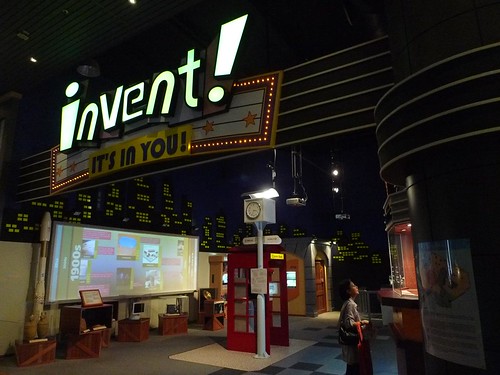One of the most befuddling things I encounter, day after working day as a bus commuter, is this:
Why are the same crowded buses always crowded?
One of the most befuddling things I encounter, day after working day as a bus commuter, is this:
Why are the same crowded buses always crowded?
When Alvin from Omy.sg first called me to ask if I’m keen to review a new GPS smartphone from Garmin and Asus, I immediately agreed. After all, I do know of Garmin’s expertise in developing easy to use GPS navigation devices – an ever useful feature whenever you are driving abroad in strange roads around the world (like the one below along California).
Want to play a part in shaping how government can better serve you through social technologies? Got a burning desire to change the delivery of essential services? Why not participate in the first ever Singapore GovCamp?
Taking place on 19th Jan (Wed) on NUS Campus, Singapore GovCamp hopes to “connect the Government with the general public and private sector to communicate, collaborate and co-create government citizen services, improving and expanding citizen engagement and empowerment.” Its the first time that such a platform has been mooted so I guess it should be pretty interesting.
In my previous post, I’ve shared how my wife and I decided at the spur of a moment to take a train from Tanjong Pagar to Johor Bahru. Naturally, the train ride itself was an experience in itself. Upon reaching our nearest Northern neighbour, our mission was to explore its newest shopping malls, eat till we burst, indulge in some massage, and shop during the post-Christmas sale (especially for Chinese New Year clothes).
The trip was certainly an eye opener. It revealed how similar yet dissimilar JB is to Singapore. While the shopping malls were every bit as impressive as ours – give or take a couple of years in terms of fashion tastes and trends – what particularly charmed me were the old style kopitiams (coffee shops), hawker centres, and street scapes which can no longer be found in Singapore. Although the roads are more chaotic (and dirty) than the streets here, I love that sense of rusticity and nostalgia in JB.
We were also charmed by the hospitality, warmth and sincerity of the Malaysians working in the service industry there. Their earnestness, proactiveness, and friendly banter made all the difference in our shopping, massaging and eating experience.

Courtesy of Diverse Connections
One of the key strategies in the Human Resource function of any organisation is to hire the right people at the right price.
While human capital are the most important assets in any organisation, the process of recruitment is often more like a “hit and miss” strategy which usually depend on the following factors…
It has been quite some time since my wife and I travelled across the Causeway to Peninsula Malaysia, and we recently decided to embark on a day trip to Johor Bahru. To heighten the novelty of the sojourn, we decided to take a train from the Tanjong Pagar KTM Railway Station and to experience what its like to chug along the old railway line before the station is decommissioned and shifted to Woodlands.
Having trekked along the Bukit Timah Railway on foot, we were curious to feel what its like to be seated in the passenger carriages. It was also an invaluable opportunity to travel along a nostalgic, scenic and heritage rich route winding through the central core of our island. Yes, I must admit that we are quite “sua ku” (mountain tortoise) in this respect as our usual modes of transportation abroad are either by air, by car or by boat.
Here’s a visual account of our journey.

As the importance of 360 degree immersive marketing grows, companies should consider curating and choreographing experience-rich physical environments in their retail outlets. A good way to do so would be putting up 3D exhibition displays that help to augment and enrich the overall experience of one’s customers.
In this regard, the Singapore Science Centre can be considered one of the leaders of the craft. Attracting more than a million visitors a year, the Science Centre offers education, enrichment and entertainment all under one roof. As part of the PS21 EXCEL Learning Journey, I had the benefit of understanding how the Centre – considered one of the best in the world – goes about creating, developing and implementing an exhibition.

Royal purple is the colour this Christmas!
As I’ve highlighted in an earlier post three years ago, Singapore’s Changi Airport is well known for embracing experiential and immersive elements in its onsite marketing. Occupying a sprawling complex of buildings covering four terminals, the airport has concertedly marketed and promoted itself not only as a gateway to the world but a retail and dining destination for locals.
The latest buzzword in marketing – especially in online circles – is gaming (or more accurately game mechanics). To some, it has become the new viral, overtaking viral videos as the holy grail of consumer engagement and interaction.
Almost everybody online these days are raving about how game mechanics can change the future of company-customer interactions.

Not exactly award winning logo design, but it does the trick!
I’m not a shopaholic and neither is my wife. However, come December each year, we would venture forth to Takashimaya Shopping Centre (anchor tenant of Ngee Ann City) for our annual dose of gifting goodness. There is a certain magic in the way the Japanese retailer lays out its various spaces, tantalising consumers to part with their hard-earned cash in the most delightful way.